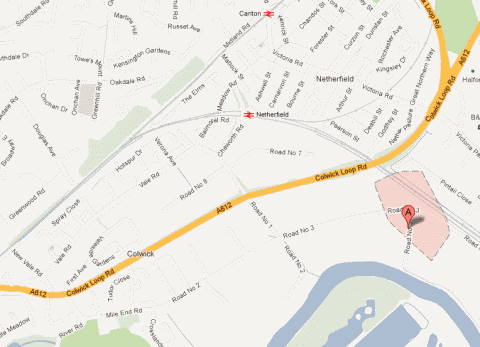I saw some interesting comments recently which claimed that people can “do two totally different tasks at once”. It was part of a discussion about teaching techniques (as usual, the DSA was cast in the role of villain by one of them, but that’s another story).
 When I’m teaching pupils, and particularly at the beginning of their training, absolutely the worst thing they can try to do is more than one thing at once. That’s because no one can do two or more things simultaneously – it just looks like they can once they become better at certain aspects of driving.
When I’m teaching pupils, and particularly at the beginning of their training, absolutely the worst thing they can try to do is more than one thing at once. That’s because no one can do two or more things simultaneously – it just looks like they can once they become better at certain aspects of driving.
People mistakenly believe that “multitasking” means doing different things at the same time. When you analyse any such situation, it doesn’t mean that at all.
A good example is computer multitasking. Admittedly, with modern multi-core processors it IS possible for computers to perform tasks simultaneously – because the cores can behave as separate computers. However, the original multitasking approach was that the CPU would time-share and would cycle through various tasks a bit at a time. It did it quickly and efficiently, so that over a typical period of a few seconds it would appear to have simultaneously carried out several major tasks to completion. But in reality it had done them in small steps, dovetailing each step from one task with those from other tasks, creating an impression of having done several things at once.
Mind you, computers don’t have to think about what to do or how to do it. Humans – particularly new drivers – do. So when a pupil is steering round a corner, then decides to try to change gear or cancel the indicator, something usually has to give – and the steering is usually it!
This is one reason why novices often steer badly on bends and corners – they are trying to do several things simultaneously when they can’t yet do any of them properly! I often find that those who have simply been allowed to “drive” without any proper tuition or correction are the worst ones for it, and the longer they’ve been allowed to get away with it the harder it can be to break them of the habit.
This issue of multitasking comes into play when teaching manoeuvres, for example. Think of the stages involved in the first part of a turn in the road:
- select gear
- gas/bite
- check it’s safe
- respond if it isn’t
- handbrake off
- control speed
- full lock
- check it’s still safe
- respond appropriately
- watch the kerb
- control speed
- straighten and stop
- handbrake
- select reverse
Many pupils will start overlapping these when they first try it, and as soon as they take the handbrake off, if they move too fast they simply stop steering. Likewise when they look around, if they’re still steering at the time their hands just freeze.
I do a simple demonstration using a pen. I start the car moving slowly, pick up a pen, then do various things like removing the cap, replacing it, putting it on the dashboard, reading the writing on it, etc. All the time the car is moving at an absolute crawl.
Then I get the pupil to do it. Usually, the car speeds up and they can’t manipulate the pen.
I then explain how I am cheating. Whereas they are trying to control the car and the pen at the same time, what I do is as follows:
- set the speed
- pick up the pen
- control the speed
- remove the cap
- control the speed
- put the cap back on
- control the speed
- read some text
- control the speed
- put the pen on the dash
- control the speed
- and so on
This is proper multitasking, the way humans have to do it. It also illustrates why the MSM routine has to be done in plenty of time in order to prevent a new driver from changing gear when they should be concentrating on steering, or from looking in the mirrors when they should be slowing down.
Of course, as people get better some things can be done without thinking (cancelling indicators, for example). But while such things need conscious thought it is vital to keep them separate – particularly since the indicators are self-cancelling, and avoiding collisions is of much higher priority than unnecessarily cancelling a signal.
Multitasking in humans is an illusion created by doing single small tasks – each part of larger, more complex tasks – in an efficiently structured way. MSM is a prime example.
What is interesting is how you can see this potential for multitasking confusion spill over with certain pupils. You occasionally get one whose brain seems to be on fire, and the simple act of changing gear can result in attempts to signal, pull on the handbrake, reach for things which aren’t there, and so on. They’re all different, and finding ways to deal with the problem is what makes this job so interesting.
Another interesting aspect is how the old adage about women being better at multitasking doesn’t apply to driving in this respect. Women are better at juggling many things in their heads, whereas men tend to want to focus on single tasks. It’s why women can often be frustrating to men when they keep changing subjects, for example. In driving, everyone has the same problems with multitasking, with some – from both sexes – handling it better than others.
Jumping between tasks without completing the previous one can be a hindrance. Perhaps this is partly why men tend to pass in fewer lessons and have higher pass rates in the driving test.
 I’d forgotten this, but last June someone was predicting the “worst winter on record” for 2011/12. I poo-pooed it as bunkum, simply because no one can predict the weather properly. If the Met Office, with its array of supercomputers can’t do it, a bunch of geeky old guys with seaweed and distorted egos certainly can’t.
I’d forgotten this, but last June someone was predicting the “worst winter on record” for 2011/12. I poo-pooed it as bunkum, simply because no one can predict the weather properly. If the Met Office, with its array of supercomputers can’t do it, a bunch of geeky old guys with seaweed and distorted egos certainly can’t. Well, it’s started.
Well, it’s started.
 When I’m teaching pupils, and particularly at the beginning of their training, absolutely the worst thing they can try to do is more than one thing at once. That’s because no one can do two or more things simultaneously – it just looks like they can once they become better at certain aspects of driving.
When I’m teaching pupils, and particularly at the beginning of their training, absolutely the worst thing they can try to do is more than one thing at once. That’s because no one can do two or more things simultaneously – it just looks like they can once they become better at certain aspects of driving. Reference points – when established BY the driver FOR the driver – can be very useful. In fact, everyone uses them one way or another no matter how much they might try to deny it.
Reference points – when established BY the driver FOR the driver – can be very useful. In fact, everyone uses them one way or another no matter how much they might try to deny it.